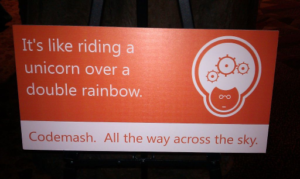I started out my series on Octokit by defining a goal; to use GitHub repository history to build a basic summary of changes contained in a release. In order to do this, we need to define what a release is and then determine how we get the pertinent information to say what changes that release contains.
At a basic level, a release is a tagged point in the git repository. GitHub takes this one step further by making a release a first class concept as a lightweight git tag with additional attributes like a title and release notes. Octokit even allows first class access to GitHub releases in a repository, like so:
var releases = await gitHubClient.Release.GetAll("RepositoryOwner", "RepositoryName");
Great! With a little extra code, we can determine which release was the latest and then get all the commits in that release.
var latestRelease = releases.MaxBy(r => r.CreatedAt);
var commitRequest = new CommitRequest
{
Until = latestRelease.CreatedAt,
Sha = latest.TagName
};
var commits = await github.Repository.Commits.GetAll("RepositoryOwner", "RepositoryName", commitRequest);
In the above code, we use MoreLinq to get the most recent release and then request all the commits in the repository on the same branch as that release up until the date the release was created. We request these commits using a `CommitRequest` object that specifies the query parameters. In this case, we want all the commits until the date of the release for the tag on which the release was made1. Of course, this will include everything ever done in that branch since the beginning of time, which is a bit of information overload. What we really want are the commits since the previous release.
var mostRecentTwoReleases= releases
.OrderByDescending(r => r.CreatedAt)
.Take(2)
.ToArray();
var commitRequest = new CommitRequest
{
Until = mostRecentTwoReleases[0].CreatedAt,
Sha = mostRecentTwoReleases[0].TagName,
Since = mostRecentTwoReleases[1].CreatedAt
};
var commits = await github.Repository.Commits.GetAll("RepositoryOwner", "RepositoryName", commitRequest);
Now we have taken the releases and used their `CreatedAt` dates to determine the most recent two and used the previous release date to set the `Since` date in our request. However, this code still has a flaw; we never said what branch the releases should be from. For all we know, the most recent two releases are on entirely different branches. To fix that, we need to filter the releases to just the branch we want.
var mostRecentTwoReleases= releases
.Where(r => r.TargetCommitish = "myBranch")
.OrderByDescending(r => r.CreatedAt)
.Take(2)
.ToArray();
var commitRequest = new CommitRequest
{
Until = mostRecentTwoReleases[0].CreatedAt,
Sha = mostRecentTwoReleases[0].TagName,
Since = mostRecentTwoReleases[1].CreatedAt
};
var commits = await github.Repository.Commits.GetAll("RepositoryOwner", "RepositoryName", commitRequest);
The highlighted line is where we filter on the appropriate branch (it took some investigation to discover that the `TargetCommitish` property of a release is its branch name). We now have just the commits for the release branch we care about between the most recent release and the one before it.
In the next post, we will look at reducing the noise in the commit history using pull requests. Until then, thank you for stopping by and don't forget to leave a comment.
- The `Sha` property of the `CommitRequest` can be either a commit hash or branch/tag name [↩]






Dear Jeff,
You are amazing. This article helped me a lot in understanding and working with Github through Octokit.
Thanks a lot for this wonderful post.
Thank you! I'm glad you found this helpful 🙂
Hi Jeff,
I am trying to find the branch on which the tag/release is created.
There is no clue from the release/commit object.
Could you please help me with this ?
Hmm, that is an interesting puzzle. I don't have an answer right now, but let me think on it. Maybe I can work something out.
I am not certain this is possible with the API, but I've never tried it. There are some questions that come to mind, though:
– What if the branch was deleted?
– Could you use the commit SHA as a proxy for the branch somehow?
– What data is returned for a release or tag? Does it have any clues that could relate to one of the other APIs?
In the meantime, if you work it out, I'd love to hear how; give another comment. Thanks for reading!